-
Content Count
101 -
Joined
-
Last visited
Posts posted by Runarsson
-
-
I've had the opprotunity to tie on a Griffin vise once before. I myself am aquainted with the traditional style of vise so I couldn't get used to all the appendages of the vise. That's only me.From an engineering standpoint, both the Montana Mongoose and the Blackfoot Mongoose are top notch. I took a Tiemco 300 6x long streamer hook and bent it in two different directions. So you'll have no problem holding a hook, which is what a vise is made for.
The vise gives you a lot of options and even comes in a nice foamed case! I'd use it.
On my case, that Griffin sticker has been replaced with a Dyna-King sticker and today it's used for other vises. The case was the only thing I was happy with regarding that vise.
A guy (who most of you probably know) use to say: "One man's dream is another man's nightmare." The Mongoose showed me what that meant. While I hear people who love their ones... I just saw my own as an ergonomical disaster with a long list of design flaws.
You never know if a vise is a good vise until you've tried it. It might be a stainless definition of the word 'quality'... but if it doesn't suit yourself, then it's not a GOOD vise.
-
I suck it through. I do have a couple of these plastic dental threaders somewhere in the tool stand, but by the time I've found one of them I will have wasted time enough to thread 10 bobbins... so I never bother to look anymore.
-
i cant agree with you any more. i mean my vise still holds hooks pretty good, just a little movemnet, but im scared to crimp down on the hook too hard so that i dont smash it and break it. i just think i have it in my mind that to be a good tyer i need a fancy vise. i dont know why. i guess i will wait until this one starts worsening, but thanks for the adviseLoren
Sitting thinking "I better be careful here so I don't make the hook move", getting interrupted and irritated when it does, being annoyed about the vise swinging... are all things which shouldn't have to be involved in your tying. Upgrading to a 'fancy' vise won't make you a better tyer, if the one you've got already gives you what you want. But if you can't trust it and/or it won't let you focus on the fly, you should get a vise that DOES give you what you want. It won't tie better flies for you... but if you are comfortable with it, it might help you to do it better yourself. If it takes waiting a month or two to get such a vise, it will be worth the wait.
(Just my two cents about upgrading.)
I'm not a popper tyer, who ties on big hooks and might use a lot of power when spinning deer hair, but only muddlers made me feel my Danvise swinging. Other things I didn't like were the moving screws, the design of the bobbin cradle, the post that didn't didn't allow the acessories I wanted (being made with metric dimensions and not the 3/8" standard). The only thing I really liked about it was that having a clamp that was tightened from above, I didn't hurt my thigh when moving my legs under the table...

... but that was far from enough to weigh up the minus part, so less than a year later I sat with a new vise.
(Just my two cents about the Danvise.)
/Nick
-
Art from me...
'Highest form of tying' - What's a "highest form of tying"?
'A curiosity but not truely fly tying' - What's a "not truely fly-tying"
'Lure making or insect replication' - Lure making, yes... if they are on the 'realistic level' that puts them in the box (and not in a frame)
'Just another form of tying like classic' - More of an "innovative" form... (alternative materials, alternative techniques, "if it works, then it's right")
'Not worth the time or effort' - If you enjoy it, why wouldn't it be worth the time or the effort?
-
it would be a change if any one could tie realistic cartoon flies or funny flies can anyone do that ?Don't know about 'cartoon', but I have caught a few laughs on these ones... so 'funny' flies maybe.




/Nick
-
Tonight I'm sitting with flies for our 'On the Edge to Nothing Swap' (#20 and smaller)...
I launched this swap on the Swedish 'Edge Fly-Fishing Forum' and guys who had never tied on anything smaller than #18-#20 joined in and bought hooks down to size #28... and are now thinking this "tiny tying" is a BLAST!!! :yahoo:
Right now I'm sitting fiddling with these:
Tony Spezio's Knitpickin' Mayfly, size #32

/Nick
-
yeah i make alot of bass poppers and i love spinning deer hair so it looks like the danvise is out of the questionthanks guys
Loren
I've got a Danvise and can testify that it's not the best way to go if you want a "muscle vise", for larger flies. I didn't find it very stabile... and I also thought that what I'd been told about the jaws quality was quite an overstatement. I've also got a Griffin Montana Mongoose and have had a Griffin Fine Point... and after those, I decided that I knew what I needed to know about Griffin's work too.
The vises I use today are both from Dyna-King... a Barracuda and a Supreme. I'll tell you, the Dyna-King line will offer you a vise that will hold a hook... and comes with quality that will make it able to serve you for many years. I haven't had mine for VERY long myself, but I know several who have been using theirs for up to 20+ years.
I second the guys who have already recommended you the Kingfisher...
/Nick
-
Runarsson,Thanks for posting the photos. A really clear example how different makers view hook sizing. The Mustad also clearly shows what a spade "eye" hook looks like. I don't believe that style of hook as been sold in the USA for over a century other than the Mustad 277 when it was available and when it one was added to each cardboard box of Mustad fly tying hooks years ago.
You can't trust hook sizes... you can't trust thread sizes. Fly-tying sure is an insecure bizniz.

-
to really understand the answer you need to hear Chris Helm give his presentation on thread sizing.The heart of it is that the ought thread sizing isnt an industry standard that is a uni 8/0 isnt the same as a orvis 8/0 or a danville 8/0.
the industry thread size standard is denier which roughly means how much a certain length of thread weighs i think its grams per 1000 meters , but im probably wrong
all 45 denier threads are the same size.
so getting back to your question if the guidenbrod 10/0 thread is 45 denier, you need to look for another 45 denier thread by another manufactuer and it would be the same size.
I know Chris Helm personally and he is in fact the one who first taught me about the denier standard (grams per 9000 meters btw). We were both on the Gudebrod pro staff... and yes, I also know that the aught "standard" is just numbers without meaning... a name of the thread and nothing more.
But my question wasn't really about denier as a standard. It was simply: Who is Orvis' thread supplier TODAY? I know Gudebrod made thread for them for a while. But I don't know if they still do it TODAY. Small hints in the Orvis product catalogue gave me some hope. Before Orvis, Gudebrod is the only one I have seen carrying a size 'G' thread... and before Orvis, Gudebrod is the only one I've seen carrying a maroon thread. But, on the other hand, maroon is just a name and not necessarily the same maroon as Gudebrod did... and 'G' is also just a name, which doesn't have to mean that it's a 250 denier thread like Gudebrod's.
Then of course I was curious about this 12/0 thread. Gudebrod didn't have a 12/0 thread... so IF it comes from Gudebrod, is it the same denier as the Gudebrod 10/0, or is it even thinner? (Gudebrod's 10/0 was a 45 denier, which is quite thin already. For comparison... UNI 17/0 is a 40 denier.)
Denier sizes aren't the same "supplier secrets" today as it once was... when "our 8/0 is stronger than their 8/0" (but not necessarily as thin). If they don't have it on their spools, they usually freely give it out if you ask them. But Orvis wouldn't tell me who the supplier was, so I don't have a supplier to ask.
... and that's why I'm asking people overseas, who might have tried BOTH Gudebrod's and Orvis' threads. Is it STILL the same threads behind the labels?
/Nick
-
//..//Thus a size 32 Tiemco midge hook is two sizes larger than the now discontinued size 32 Mustad midge hook and both are differently sized per hook size from the Partridge Vince Marinaro midge hook.
//..//
For those who have never seen this (infamous) Mustad 277... here are a couple of pics showing a Mustad 277 and a TMC518 (both #32's) together for comparison:

(In millimeters)

/Nick
-
I would have liked to see the "Having my tying room cleaned by someone else" somewhere...

-
I hear from several people that Orvis' tying thread (here) is supplied by Gudebrod. It doesn't seem unrealistic to me, since I hadn't seen anyone else than Gudebrod carrying a size 'G'... and the fact that a few of the spools Gudebrod sent me when they dropped their pro staff had Orvis labels.
I can't find a 10/0 thread in the Orvis product catalogue though (even though a couple of the 10/0 spools Gudebrod sent me had Orvis labels). They DO have a 12/0 thread though... with the same color chart as the other sizes.
Does anyone know if the denier size of this 12/0 is equivalent to the 45 denier 10/0 Gudebrod thread (or if it's in fact the very same thread with a more fair aught "nick")?
/Niclas
-
17/0 Thread, the best stuff since they invented the rotarty vise.
When you want to go thinner than that, pick out a spool of GSP thread and start separating. In 3-4 filaments, slightly twisted, you will have a reeeally thin thread with a breaking strength higher than you need for tying a fly in the "tiny fly" size range.
-
I have a Peak pedestal vise. I have never had a problem with the pedestal slipping or wobbling when tying, however size 6 hooks are the bigggest I've tied. I frequently switch out the Peak vise with a Griffin Montana vise, since they have the same size shaft. So far, I have not had the desire to take my fly-tying on the road. Lugging the Peak pedestal would not be much fun.Cheers,
neoFLYte
Austin TX
When tying at the Swedish Fishing Fair, I brought the Barracuda with its 5lbs base for me, the Supreme (+ 4lbs base) for a tyer friend who wanted to borrow... and another 4lbs base for another tyer. Together with all the other stuff in it, the suitcase for that trip was certainly not a "snatch and run" one for a potential luggage thief.

/Nick
-
I use pedestal base to 95% of my tying. It's most convenient since I don't tie only in my tying room. I move around in the apartment... both kitchen and in the livingroom (with a beer in front of the TV
 ). It's also good when weaving on the Barracuda, to be able to move it away from you instead of having to move away from the bench.
). It's also good when weaving on the Barracuda, to be able to move it away from you instead of having to move away from the bench.I think the 5lbs base for the Barracuda is very stable... and it's more or less part of the bench. When tying on the Supreme, I often just change vise in the base.
-
I think that's a question of what you want. If you WANT to save money, I'm sure you can in the long run. Personally I'm a material freak... "WOW! That looks cool! I must buy that!"... but will I use it? Then with my tools and vises. Noupp. No money saved in this house. But on the other hand I never gave it a fair try either... just not that kind of man.

/Nick
-
Okay, so I recently bought some craft foam to tie some foam terrestrials, and after a couple flies, I got to wondering if a fly made mostly out of foam could be as effective as one made out of natural materials. So, foam or natural material, is one better than the other?As effective? Personally I can't see why it shouldn't. The silhouette from for example a deer hair beetle doesn't differ much from a foam beetle's. What I'm quite sure of though, is that the foam beetle will be just as effective LONGER. When the deer is pointing in all directions from that beetle, the foam beetle will still be fit for fight. It will also float for a longer time.
I fish a lot with foam (and can't complain on the results). At the small lakes I usually fish you will stand with branches from the trees tickeling your neck and you can fish for a day without making a single false cast. Roll casting a fly tied of natural material will drown it pretty quick.
Foam or natural to me? Foam... naturally!

/Nick
-
I did a Parallel Weave step-by-step a while ago for my own site.
http://www.swedneckflyfishing.com/parallelweave_steps.htm
/Nick
-
DO NOT HESITATE TO ASK FOR HELP!
There is no such thing as a 'stupid question' and there are lots of people who WILL
share what they know. Of course it's fun to experiment yourself and the feeling of
solving a problem is nice. But when it comes to the point where frustration starts to
take over, the best solution is to ask for help. Standing on the same spot is a waste
of time... giving up is losing valuable knowledge.
And even if you DO solve it yourself, a good advice is to ask anyway. There are often
several ways to achieve the same result and the best way is always the way that suits
YOU best. Your own solution might have worked, but there might still be ways you would
have prefered if you knew about them.
/Nick
-
<!--quoteo(post=314725:date=Jul 26 2008, 08:38 PM:name=Runarsson)--><div class='quotetop'>QUOTE (Runarsson @ Jul 26 2008, 08:38 PM) <a href="index.php?act=findpost&pid=314725"><{POST_SNAPBACK}></a></div><div class='quotemain'><!--quotec-->I started with an Indian "comes with the kit" vise. After that I bought a cheapo rotary, just to try what it was all about. After finding out what it was all about, the rest of the vises have all been rotary. Danvise, Griffin Montana Mongoose, Dyna-King Barracuda Jr and now a Dyna-King Barracuda Ultimate Indexer. It has everything I want, with exception of air conditioning... but I guess you just can't have it all.

/Nick<!--QuoteEnd--></div><!--QuoteEEnd-->
The update on my earlier post is that I have let conventional vises back into my in-line rotating life again. I just got myself a Dyna-King Supreme and am very happy with that. It hasn't 'replaced' my Barracuda, but it's an excellent addition. Both have their own advantages so none of them will be collecting dust.
/Nick
-
To my Barracuda, I have now added a conventional vise... the Dyna-King Supreme. Like the Barracuda, a real high-quality vise. The primary reason for getting it is that it saves space on my tying bench which isn't that huge. I do quite a lot of rotary tying, but for the times I only use the rotary function for watching the different angles of the fly, there is no real need for an in-line rotary vise. The fly can be rotated 360 degrees in the Supreme too and if it's just a question of positioning the fly, the shank doesn't really need to stay perfectly horizontal. The first time in 4,5 years I have used a conventional vise and I think it's a really good addition to my rotary vise.
/Nick
(Click picture for details)
-
-
For most of my fishing (rainbow trout and brown trout) I tie on a Chili Pepper the first thing I do... BEFORE everything else start failing.

/Nick
-
Rite Bobbin, Standard model... my favourite

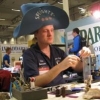
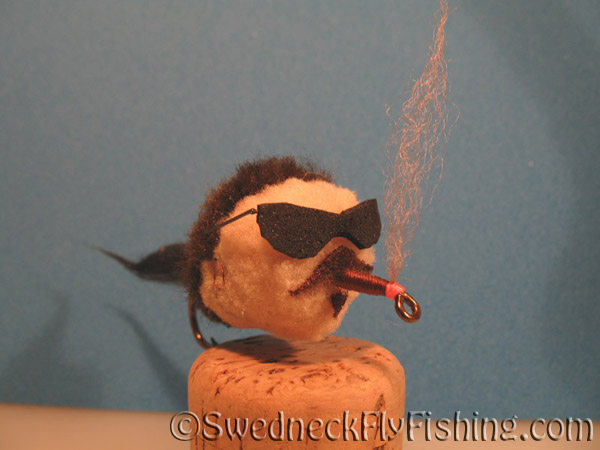
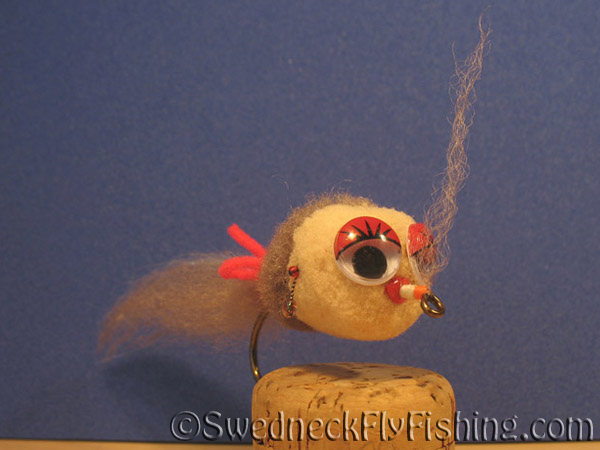
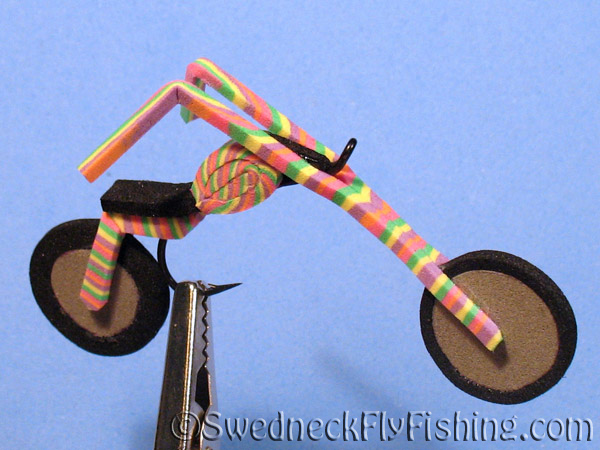
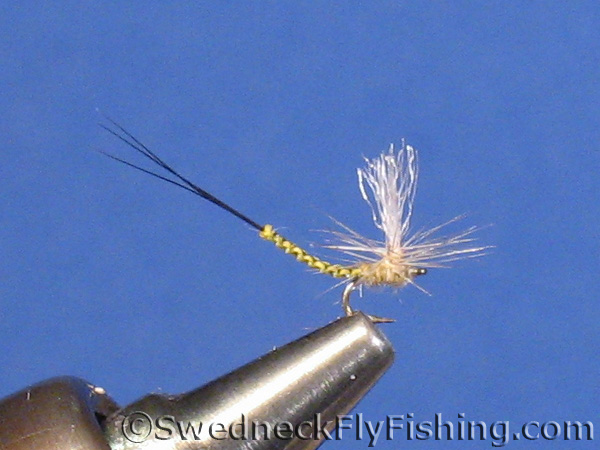
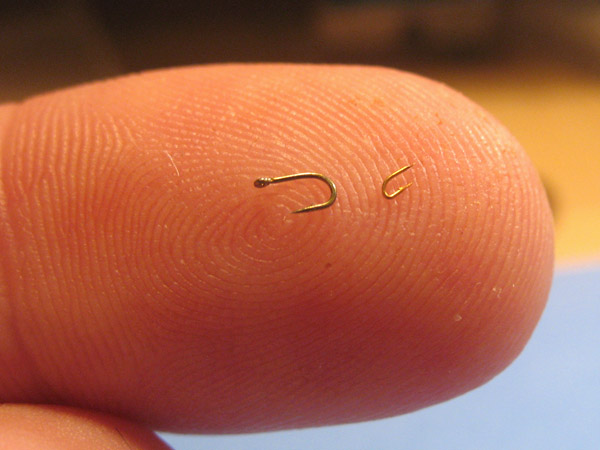
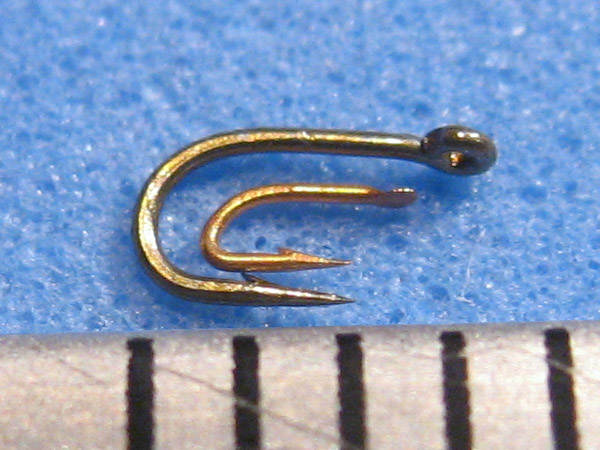


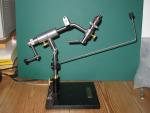
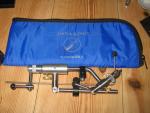
Tying Material Websites
in The Fly Tying Bench
Posted · Report reply